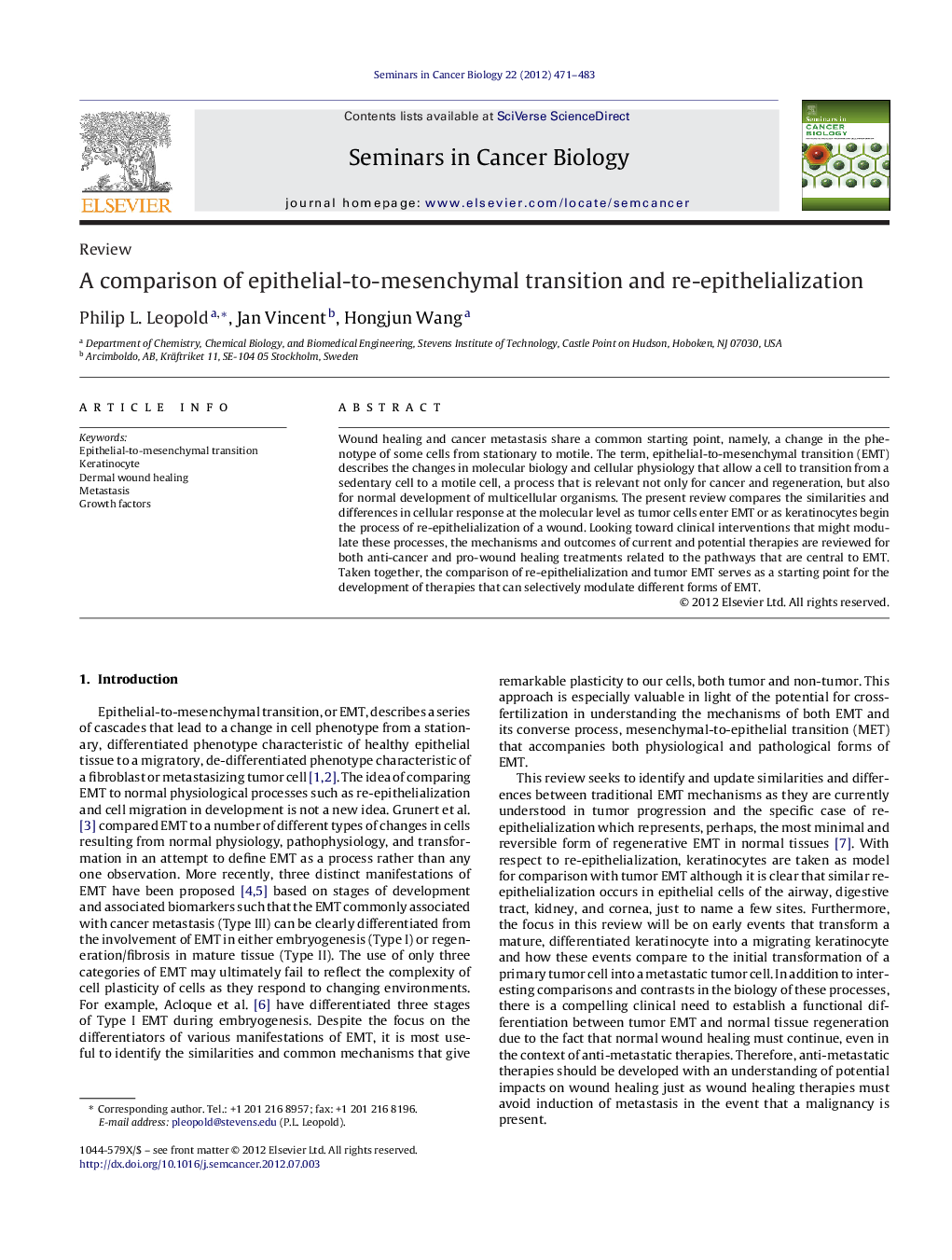| Article ID | Journal | Published Year | Pages | File Type |
|---|---|---|---|---|
| 2023774 | Seminars in Cancer Biology | 2012 | 13 Pages |
Wound healing and cancer metastasis share a common starting point, namely, a change in the phenotype of some cells from stationary to motile. The term, epithelial-to-mesenchymal transition (EMT) describes the changes in molecular biology and cellular physiology that allow a cell to transition from a sedentary cell to a motile cell, a process that is relevant not only for cancer and regeneration, but also for normal development of multicellular organisms. The present review compares the similarities and differences in cellular response at the molecular level as tumor cells enter EMT or as keratinocytes begin the process of re-epithelialization of a wound. Looking toward clinical interventions that might modulate these processes, the mechanisms and outcomes of current and potential therapies are reviewed for both anti-cancer and pro-wound healing treatments related to the pathways that are central to EMT. Taken together, the comparison of re-epithelialization and tumor EMT serves as a starting point for the development of therapies that can selectively modulate different forms of EMT.
